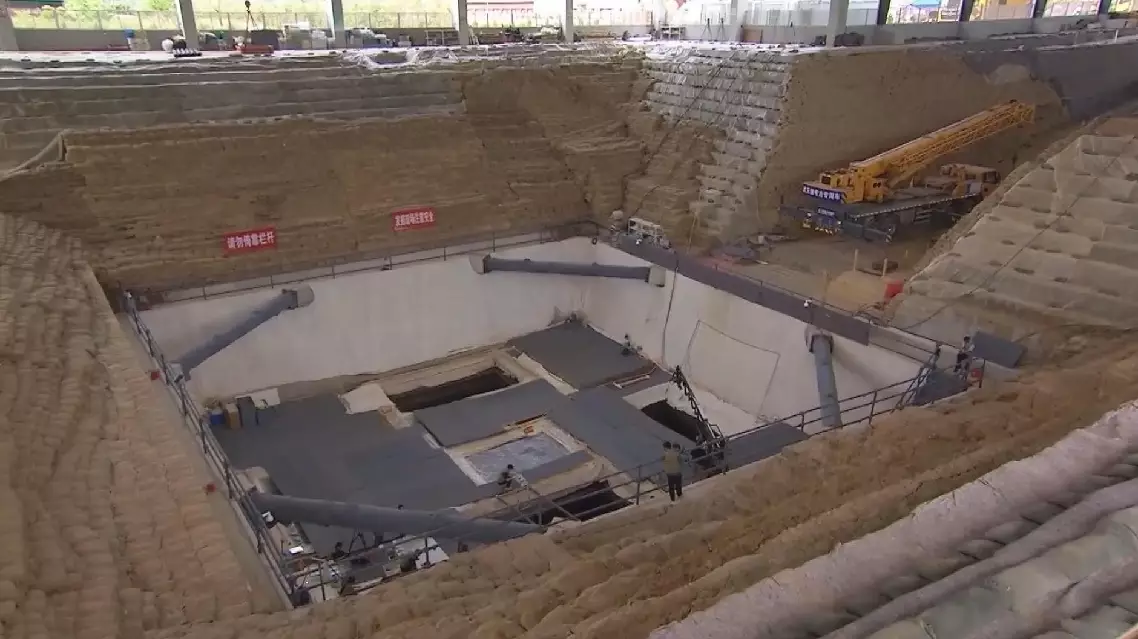China's box office revenue reached over 4.54 billion yuan (626.9 million U.S. dollars) so far in 2025, with the number of moviegoers exceeding 100 million.
According to online platform data, as of 10:43 on Thursday, a total box office revenue of 4.546 billion yuan had been made from 12.62 million screenings at an average ticket price of 45.4 yuan.
Chinese thriller "Sheep Without a Shepherd 3" currently leads 2025's viewership rankings, while six new films have been released for the 2025 Spring Festival season, which are the second episode of the Chinese myth trilogy "Creation of the Gods," "Ne Zha 2," a sequel to the 2019 animated blockbuster "Ne Zha" after five years, "Detective Chinatown 1900," the newest installment of the "Detective Chinatown" franchise that debuted in 2015, Operation Hadal, Boonie Bears: Future Reborn, the latest in the long-running animated series, and Tsui Hark's adaptation of Jin Yong's wuxia classic "The Legend of the Condor Heroes."

China's box office exceeds 4.54 bln yuan so far in 2025
The top six archaeological findings across China in 2024 were announced at Wednesday's annual archaeology forum hosted by the Chinese Academy of Social Sciences.
The discoveries, covering from the Paleolithic Age to the Yuan (1271-1368), Ming (1368-1644), and Qing Dynasties (1636-1912), shed light on studies on the history and culture of ancient China.
The earliest of the six, the Dadong Site, is located in Jilin Province in northeast China. Discovered in the strata dating from 28,000 to 24,000 years ago, the site involves an artificial stone circle, which should be the remains of a primary shed of ancient humans, implying the archaeological importance of the Changbai Mountain area in the field of evolutionary anthropology studies.
The Xiatang Site in east China's Zhejiang Province, a Neolithic Age settlement site, reveals the structure and layout of the ancient village, providing new evidence for the study of the social structure of early-stage agricultural societies.
At the Siwa Site, another Neolithic Age site in northwest China's Gansu Province, the first prehistory large-scale near square-shaped moat was discovered, which might hint at the origin of the square-walled cities in China.
The Zhouyuan Site in Shaanxi Province of northwest China shows evidence of China's earliest dynasties, providing written materials for studying the history of Western Zhou Dynasty (about 1046 – 771 BC). With over 200 bone and tortoise shell pieces for divination rites being found, phrases totaling over 180 oracle scripts were recognized, covering documentations of astronomy, calendar, history, and geology.
At a Warring States period site in east China's Anhui Province, the Wuwangdun Site, researchers excavated over 10,000 pieces of cultural relics, including multiple Ding sets, or special cauldron sets, the representative ritual vessels that have long been used to represent social class and nobility, and symbols of China's traditional rites and ethnicity.
In east China's Jiangxi Province, the archaeological site of Jingdezhen City, the world-famous town of porcelain with a thousand-year history, welcomed new discoveries. The latest discoveries at the Jingdezhen Site revealed the sources of materials and fuels that supported the large-scale porcelain production, as well as the local traffic net in the Yuan, Ming, and Qing Dynasties, giving people a perception to understand Jingdezhen's development history.
"These discoveries are not only about gathering ancient relics in the fields, but, more importantly, about their value for academic research. Every single result complements our understanding of Chinese history and culture," said Shi Jinsong, the deputy head of the Institute of Archaeology at the Chinese Academy of Social Science.

China unveils top archaeological findings of 2024

China unveils top archaeological findings of 2024






















































